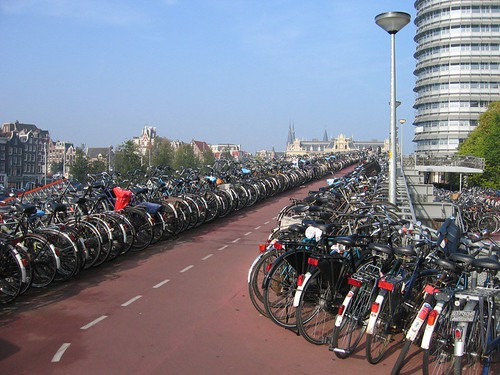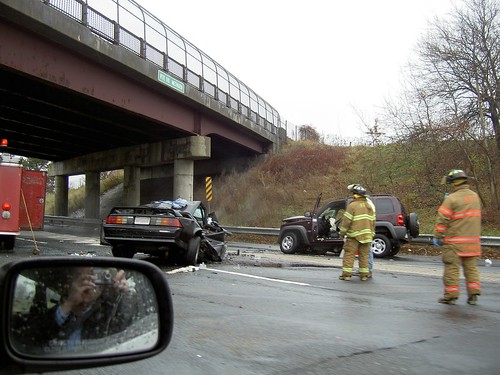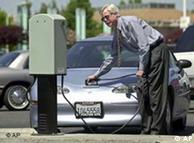Paradigm Shift Does G.M.’s P.U.M.A. Rethink Transportation?

The Project P.U.M.A. prototype on 18th Street in Manhattan.
(Source: Wheels Blog – New York Times)
When General Motors unveiled Project P.U.M.A. in New York on Tuesday (with partner Segway), it was showing not so much a vehicle as a vision for a new transportation system. And that’s high risk, high reward, because as much as new concepts are needed, they’re excruciatingly hard to actually put in place. Our highways are haunted with unfulfilled visions, from electric station-cars to statewide hydrogen-refueling networks.
The P.U.M.A. is a two-wheeled, two-seat gyroscopically balanced urban transit device with a top speed of 35 miles an hour and the potential to be remotely operated. Toyota has also shown a fanciful personal mobility option, called the i-Swing, a single-seater pod on wheels, with joystick controls.
So far, the P.U.M.A. concept is receiving cautiously optimistic reviews. “It’s exactly the right vision, and it’s the kind of thinking we need desperately in transportation,” said Dan Sperling, director of the Institute of Transportation Studies at the University of California-Davis and coauthor (with Deborah Gordon) of “Two Billion Cars: Driving Toward Sustainability.”
Mr. Sperling points out that the Low-Speed Vehicle (L.S.V.) category, limited in most states to 35 miles an hour, was created by the Department of Transportation in the 1990s to respond to the type of technology that G.M. is now talking about.
The L.S.V. category, which includes battery-powered neighborhood electric vehicles, has been slow to take off. But Mr. Sperling said he saw those vehicles, including the Chrysler GEM, gaining popularity around Davis for use in retirement and gated communities, military bases and office parks. “We need more diversity of vehicle types,” he said. “There’s no reason everything has to be 3,000-plus-pound cars and trucks. But for this to take off it needs one extra step to integrate the vehicles into the broader network of roads.”
For David J. Friedman, research director for the clean vehicles program at the Union of Concerned Scientists, the P.U.M.A. has possibilities, though what he called “the massive monitoring and managing of traffic to minimize congestion and maximize road usage” has been tried before; the general category is called Intelligent Transportation Systems. G.M. experimented with hands-free Buicks on automated highways in 1997, but the efforts were thwarted by high costs and driver confusion.
“We need to design our cities around something other than two- or three-ton vehicles,” said Mr. Friedman. “The data suggests that by 2030 half of the built environment in the U.S. will be new. What if we designed new suburban towns with integrated shopping so you could walk, bike or use a P.U.M.A. to get around, with conventional vehicles only for longer trips?”












